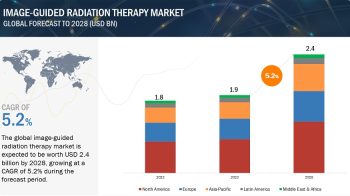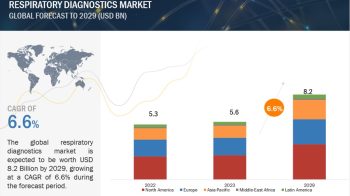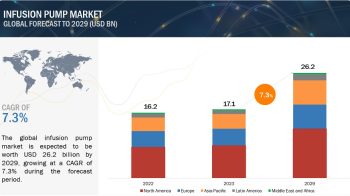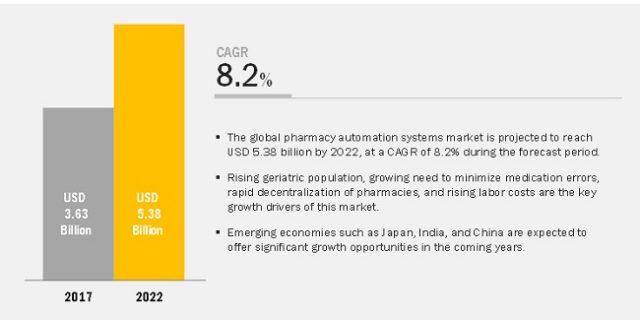
The ongoing COVID-19 pandemic—and the worldwide reaction to it—has compelled companies to radically rethink their strategies and the way they operate. We salute the industry experts helping companies survive and sustain in this pandemic.
At MarketsandMarkets™, analysts are undertaking continuous efforts to provide analysis of the COVID-19 impact on the Pharmacy Automation Market. We are working diligentlyto help companies take rapid decisions by studying:
• The impact of COVID-19 on the Pharmacy Automation Market, including growth/decline in product type/use cases due to the cascaded impact of COVID-19 on the extended ecosystem of the market
• The rapid shifts in the strategies of the Top 50 companies in the Pharmacy Automation Market
• The shifting short-term priorities of the top 50 companies’ clients and their client’s clients
You can request an in-depth analysis detailing the impact of COVID-19 on the Pharmacy Automation Market: https://www.marketsandmarkets.com/speaktoanalystNew.asp?id=71522890
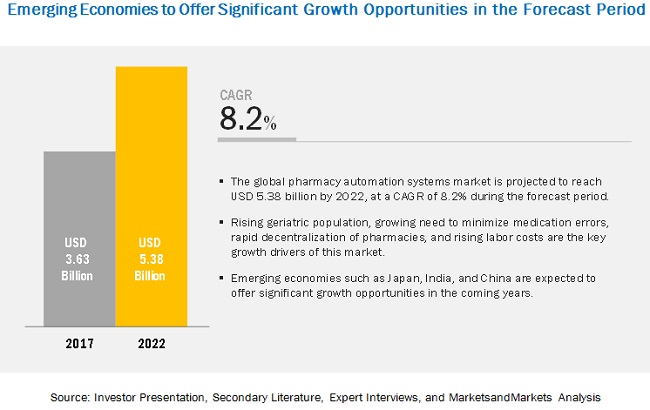
According to the new market research report “Pharmacy Automation Market by Product (Medication Dispensing System (Robot, Carousel), Packaging & Labeling System (Unit Dose, Multi Dose), Tabletop Counter, Storage System), End User (Inpatient, Outpatient, Retail Pharmacy) – Global Forecast to 2022”, , published by MarketsandMarkets™, MarketsandMarkets forecasts the pharmacy automation market is estimated to grow from USD 3.63 billion in 2017 to USD 5.38 Billion by 2022, at a Compound Annual Growth Rate (CAGR) of 8.2% during the forecast period.
Browse in-depth TOC on “Pharmacy Automation Market”
181 – Tables
54 – Figures
218 – Pages
Download PDF Brochure: https://www.marketsandmarkets.com/pdfdownloadNew.asp?id=71522890
The major factors that are expected to be driving the pharmacy automation market are the growing need to minimize medication errors, rapid decentralization of
pharmacies, rising geriatric population and rising labor cost. On the other hand, reluctance among the healthcare organizations to adopt pharmacy automation systems is expected to restrain the overall market growth to a certain extent during the forecast period. The objective of the report is to define, describe, and forecast the pharmacy automation market size based on product, end user, and region.
By product, the automated medication dispensing systems segment accounted for the largest share of the pharmacy automation market
Based on product, the pharmacy automation market is segmented into automated medication dispensing systems, automated packaging and labelling systems, automated table top counters, automated medication compounding systems, automated storage and retrieval systems, and other pharmacy automation systems. Automated medication dispensing systems accounted for the largest share of the pharmacy automation market in 2016.
By end user, the retail pharmacies segment to record the highest CAGR during the forecast period
On the basis of end users the market is classified into inpatient pharmacies, outpatient pharmacies, pharmacy benefit management organization and mail order pharmacies, and retail pharmacies. Retail pharmacies is the fastest growing end user segment in the pharmacy automation market during the forecast period. Growing need to minimize dispensing errors, rising number of retail pharmacies, and increasing workload on pharmacists are the factors driving the adoption of pharmacy automation systems in retail pharmacies
Request Sample Pages: https://www.marketsandmarkets.com/requestsampleNew.asp?id=71522890
North America accounts for the largest market size during the forecast period.
North America is expected to hold the largest market size in the pharmacy automation market during the forecast period, followed by the European region. The large share of the North American pharmacy automation market can largely be attributed to the increasing number of drug prescriptions at pharmacies resulting from growth in the aging population. Furthermore, growth in insurance coverage in the U.S. has increased the burden on the country’s healthcare system, which has highlighted the need for improving efficiency and management of work in North America and also the presence of a large number of pharmacy automation companies, such as include Becton, Dickinson, and Company (U.S.), Cerner Corporation (U.S.), Capsa Healthcare (U.S.), Parata Systems LLC (U.S), Baxter International, Inc. (U.S.), Omnicell, Inc. (U.S.), ScriptPro LLC (U.S.), and Talyst System LLC. (U.S.). in this region.
